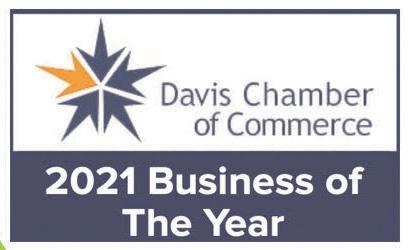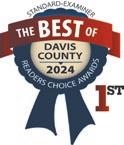





The Church of Jesus Christ of Latter-day Saints Fall 2024 General Conference





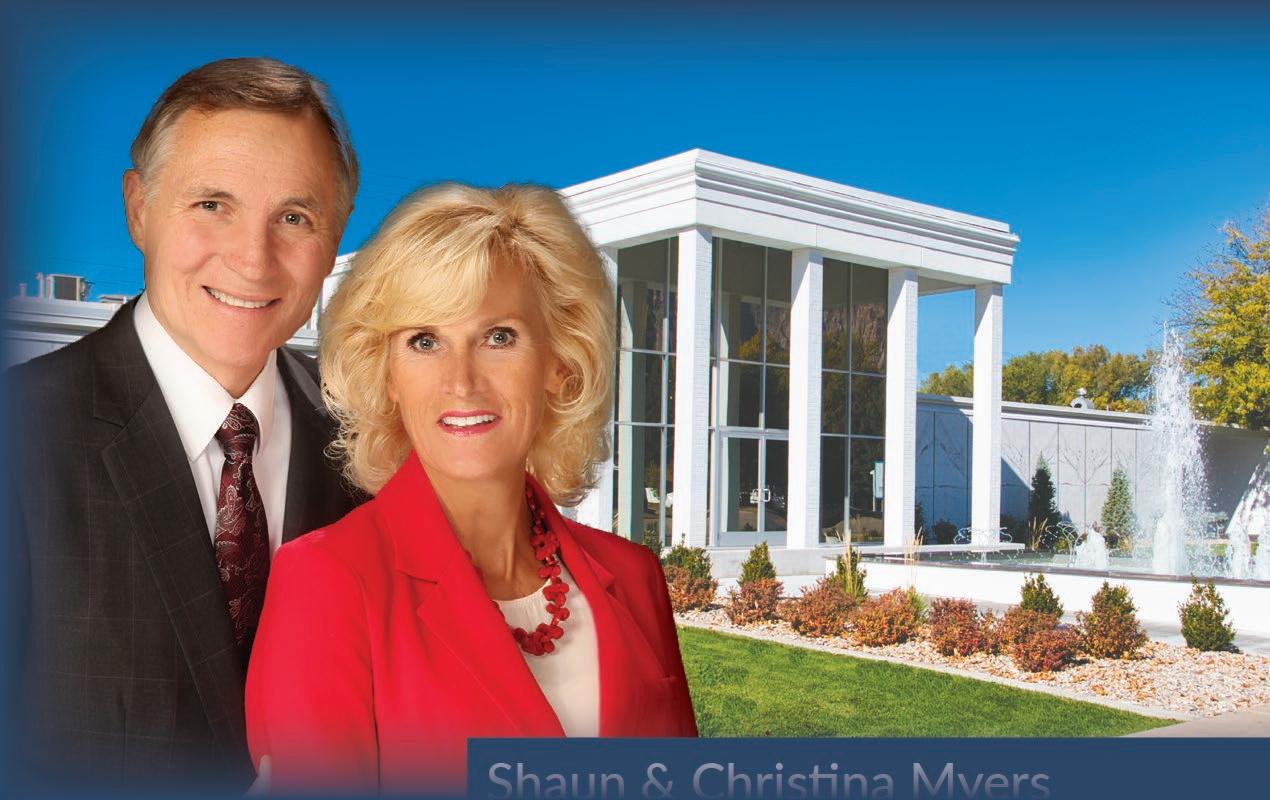



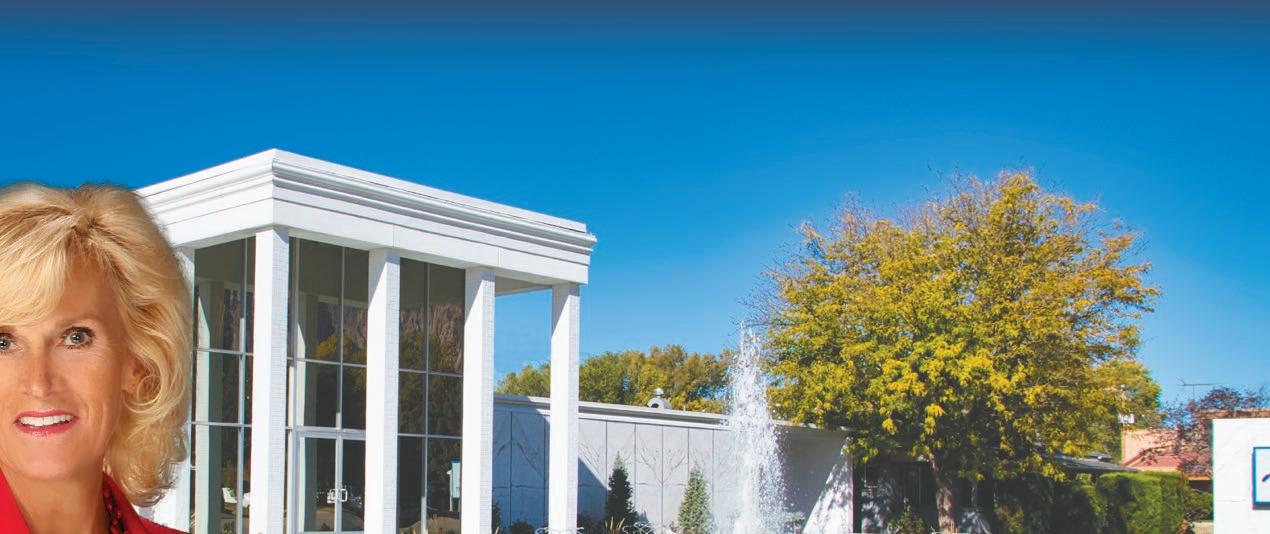






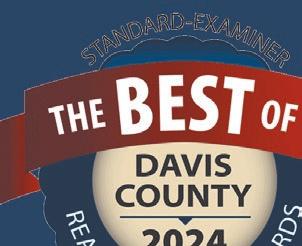



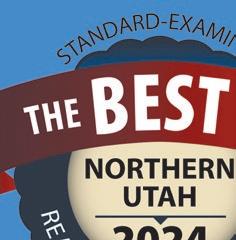



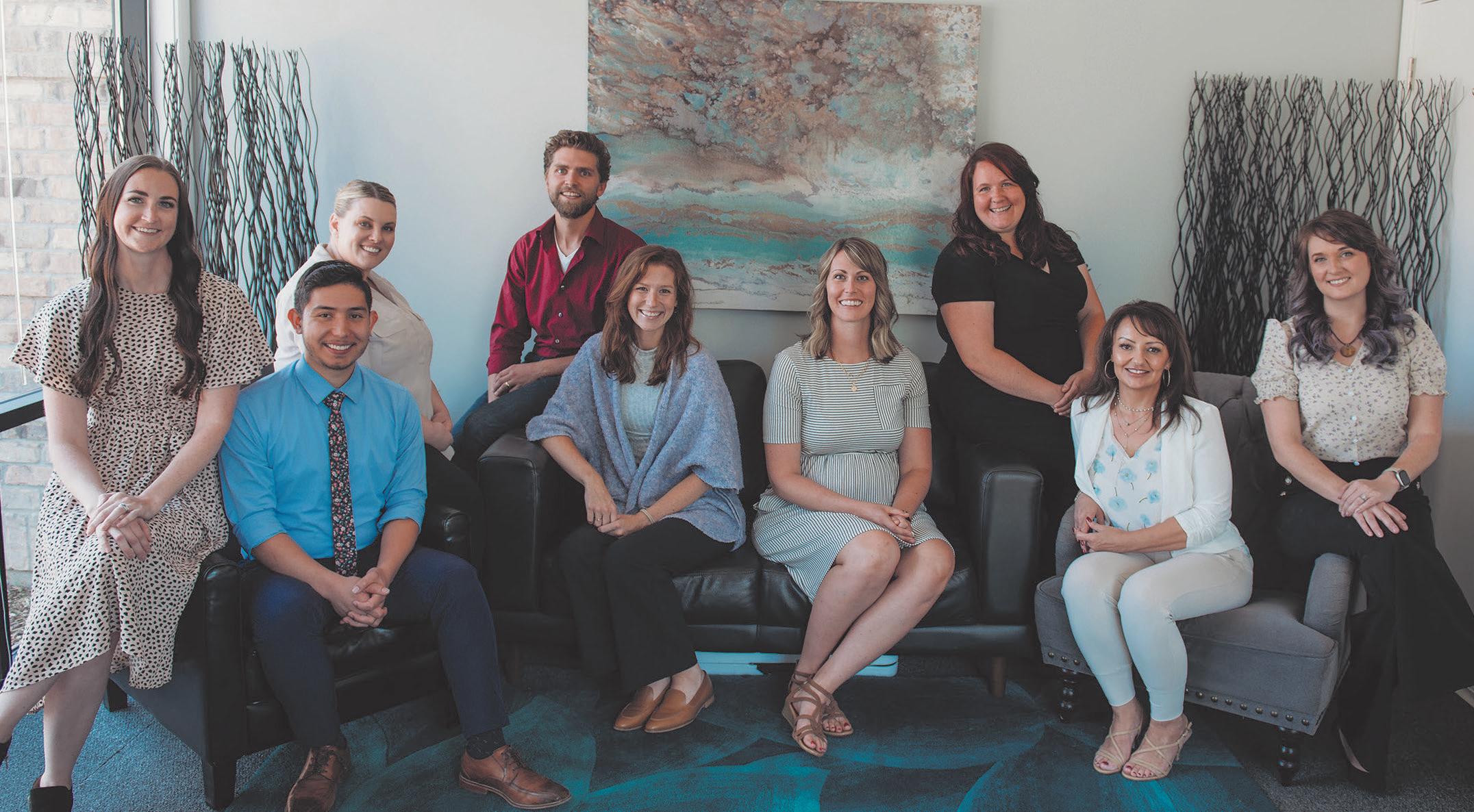




















6 14 17 19 21
History, popularity and impact of the words ‘covenant path’
What is the covenant path?
Covenants: A way of life and happiness
BYU professor: ‘Covenant path’ not a recent modern church concept
My Covenant Path: An attempt to help new, returning Latter-day Saints














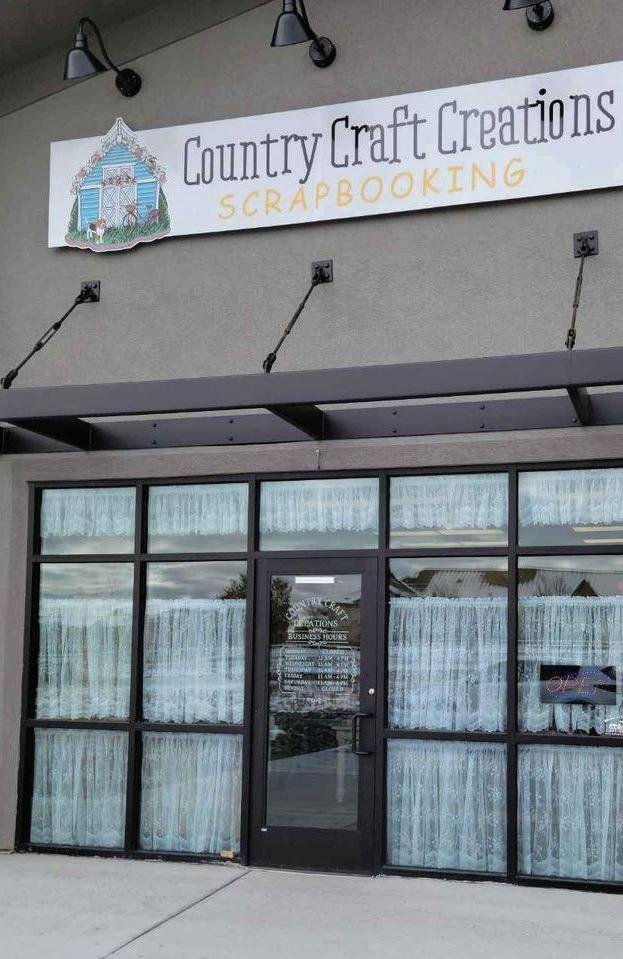

Baptism is a covenant — or a promise — that you make with God. When you get baptized, you promise to serve him and follow his commandments to the best of your abilities.
BY RYAN COMER
Standard-Examiner
Russell M. Nelson has used a number of words and phrases that have been memorable for members of The Church of Jesus Christ of Latter-day Saints since becoming president of the church in January 2018.
Two words that have become ubiquitous are “covenant path.” Listen to any general conference of the church and you are sure to hear the words —
multiple times.
Covenants, as defined by Nelson during an October 2011 general conference address, are a “sacred promise” between a person and God.
“(God) fixes the terms,” Nelson said. “Each person may choose to accept those terms. If one accepts the terms of the covenant and obeys God’s law, he or she receives the blessings associated with the covenant. We know that ‘when we obtain any blessing from God, it is by obedience to that law upon which it is predicated.”
(Doctrine and Covenants 130:21)
The first documented reference to the words “covenant path” at general conference was in April 2007 by Sister Elaine S. Dalton during a talk titled “Stay on the Path.” The words were used in 18 general conference addresses prior to Nelson becoming president, twice by Nelson himself (October 2015 and April 2017). Elders D. Todd Christofferson, Gary E. Stevenson and David A. Bed-
nar, all of the Quorum of the Twelve Apostles in the church, each used the phrase prior to 2018, as did President Henry B. Eyring, second counselor in the First Presidency of the church. Initially, the words were used mostly by female speakers. Seven of the first 10 talks in general conference that included the words were by women. Carole M. Stephens used it in three talks and Linda K. Burton used it in two. Of the 18 total addresses with the words prior to Nelson becoming president of
the church, nine were by women. It’s hard to know the times the words were used in settings other than general conference. Knowledge of general conference references comes from the use of what’s called the scripture citation index, curated by Stephen W. Liddle and Richard C. Galbraith. A look at how Dalton used the words in her 2007 talk shows that she took the phrase from Jeffrey R. Holland, current acting president of the Quorum of the Twelve Apostles.
She said: “Elder Jeffrey R. Holland reminds us:
‘Beginning with our baptism, we make covenants as we follow this path to eternal life, and we stay on the path by keeping them. ...

The most important part of Sunday meetings within The Church of Jesus Christ of Latter-day Saints is the sacrament (or Communion).
dent of the church. The remarks that he gave, which included the words, were published as the First Presidency message in the April 2018 issue of the Ensign.
In his remarks, Nelson said:
“Now, to each member of the church I say, keep on the covenant path. Your commitment to follow the savior by making covenants with him and then keeping those covenants will open the door to every spiritual blessing and privilege available to men, women and children everywhere.
‘The promptings of the Holy Ghost will always be sufficient for our needs if we keep to the covenant path. Our path is uphill most days, but the help we receive for the climb is literally divine. We have three members of the Godhead — the Father, the Son and the Holy Ghost — helping us because of the covenants we have made.’”
Dalton was referencing remarks
Holland gave as part of an address called “What I wish every new member knew—and every longtime member remembered” in the October 2006 issue of the Liahona and Ensign.
Nelson spoke of the “covenant path” during a live broadcast from the Salt Lake Temple’s annex on Jan. 16, 2018, two days after he was set apart as the presi-
“As a new presidency, we want to begin with the end in mind. For this reason, we’re speaking to you today from a temple. The end for which each of us strives is to be endowed with power in a house of the Lord, sealed as families, faithful to covenants made in a temple that qualify us for the greatest gift of God — that of eternal life. The ordinances of the temple and


the covenants you make there are key to strengthening your life, your marriage and family and your ability to resist the attacks of the adversary. Your worship in the temple and your service there for your ancestors will bless you with increased personal revelation and peace and will fortify your commitment to stay on the covenant path.
“Now, if you have stepped off the path, may I invite you with all the hope in my heart to please come back. Whatever your concerns, whatever your challenges, there is a place for you in this, the Lord’s church. You and generations yet unborn will be
blessed by your actions now to return to the covenant path. Our father in heaven cherishes his children, and he wants each of us to return home to him. This is a grand goal of The Church of Jesus Christ of Latter-day Saints — to help each of us to come back home.”
In the April 2018 general conference, the first general conference after Nelson became president, the words “covenant path” were used by seven speakers.
Said Bishop Gérald Caussé, presiding bishop:
“Our sole aim is to invite each son and daughter of God to come unto Christ and to guide him or her along the covenant path. Nothing is more important. Our
work is all about people and covenants.”
Said Dallin H. Oaks, first counselor in the First Presidency:
“I believe we all desire to follow President Russell M. Nelson’s challenge to press forward ‘on the covenant path.’ Our commitment to do so is strengthened by consistently following the ‘small things’ we are taught by the gospel of Jesus Christ and the leaders of his church. I testify of him and invoke his blessings on all who seek to keep on his covenant path, in the name of Jesus Christ, amen.”
Said Elder Dale G. Renlund, a member of the Quorum of the Twelve Apostles:
“When ordinances are performed on behalf of the deceased, God’s children on
earth are healed. No wonder President Russell M. Nelson, in his first message as president of the church, declared, ‘Your worship in the temple and your service there for your ancestors will bless you with increased personal revelation and peace and will fortify your commitment to stay on the covenant path.’”
Said Devin G. Durrant, first counselor in the Sunday School general presidency:
“As parents, we introduce our children to Heavenly Father and his son, Jesus Christ. We help our children say their first prayer. We offer guidance and support as they enter the covenant path through baptism.”
Said Elder Taniela B. Wakolo, of the Seventy:
“The prophet Amulek declared, ‘This ... is the time ... to prepare to meet God’ (Alma 34:32). How do we prepare? By worthily receiving ordinances. We must also, in President Russell M. Nelson’s words, ‘keep on the covenant path.’
President Nelson continued, ‘Your commitment to follow the savior by making covenants with him and then keeping those covenants will open the door to every spiritual blessing and privilege available to men, women and children everywhere.’”
Said Elder Lynn G. Robbins, of the presidency of the Seventy:
“In this lifetime curriculum of repentance, the sacrament is the Lord’s designated way of providing continual access to his forgiveness. If we partake with a broken heart and a contrite spirit, he proffers us weekly pardon as we progress from failure to failure along the covenant path. For ‘notwithstanding their sins, my bowels are filled with compassion towards them.’”
Said Elder Brian K. Taylor, of the Seventy:
“Coming to know our father changes everything, especially our hearts, as his
gentle spirit confirms our true identity and great worth in his sight. God walks with us along the covenant path as we seek him through prayerful pleadings, scriptural searchings and obedient strivings.”
Since Nelson became president, the words “covenant path” have been used in 135 general conference addresses. It was used in 13 talks this past general conference in April, the most references in a single conference since October 2019.
That words used by the president of the church would suddenly be amplified should not be a surprise based on what Elder Ronald A. Rasband, a member of the Quorum of the Twelve Apostles, said at general conference in April.
“Second, the words of prophets matter,” he said after talking about the importance of the Lord’s words. “Prophets testify of the divinity of Jesus Christ. They teach his gospel and show his love for all. I bear my witness that our living prophet, President Russell M. Nelson, hears and speaks the word of the Lord.”
Later in the talk, Rasband said:
Please see PATH, Page 10


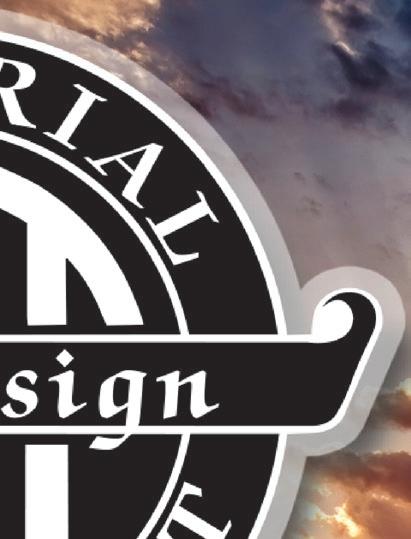





























“Elder George Albert Smith, long before becoming president of the church, spoke of sustaining the prophet and heeding his words. He said: ‘The obligation that we make when we raise our hands ... is a most sacred one. ... It means ... that we will stand behind him; we will pray for him; ... and we will strive to carry out his instructions as the Lord shall direct.’ In other words, we will diligently act upon our prophet’s words.”
in revelation, and I inserted these words in the prayer near the end: ‘May we think celestial, letting thy spirit prevail in our lives, and strive to be peacemakers always.’ The Lord was reminding me to heed the words of our living prophet: ‘Think celestial,’ ‘let the spirit prevail,’ ‘strive to be peacemakers.’ Words of the prophet matter to the Lord and to us.”
Rasband then shared a story about how he was inspired to alter the words he was planning on using for the dedicatory prayer at the dedication of the Bangkok Thailand Temple to include words that had been used by Nelson.
For members of The Church of Jesus Christ of Latter-day Saints like Wade and Shanna Dummer and Liza Mickelsen, the repetition of words and phrases by prophets and apostles is crucial.
“The prophet and apostles ‘see around the corners,’ and so repeated phrases help me know I should pay particular attention to what is being said,” Wade Dummer said.






“The night before the dedication, I was awakened from my sleep with an unsettled, urgent feeling about the dedicatory prayer,” Rasband said. “I tried to set aside the prompting, thinking the prayer was in place. But the spirit would not leave me alone. I sensed certain words were missing, and by divine design they came to me




Said Shanna Dummer: “The word remember is so important to our focus on the savior and his wonderful gifts he has given us. The Lord asks his chosen servants to help us remember what is most important, through repeating themes and phrases, to bless our individual and family lives.”

















Added Mickelsen: “Prophets and apostles receive direction and guidance from the spirit. I don’t believe any word choice is by chance. When they repeat words over and over again, I believe they are trying to put as much emphasis on it as they can.”
According to Wade Dummer, the effect of the increased focus on the words “covenant path” has been hope “as it emphasizes this life is a journey.”
Shanna Dummer highlighted continued progression as an effect of the emphasis.
“Adding ‘spiritual momentum’ as President Nelson invites us helps us keep moving forward on that path back to our Heavenly Father and savior Jesus Christ,” she said. “When I picture what the covenant path looks like, it is filled with light but also has room enough on the path to stumble without falling off. We can stay on the covenant path by adding more spiritual light to our lives every day and turning to God — repenting — daily to stay on that path of light.”
Mickelsen said the emphasis has centered her on Jesus Christ and the promises she has made to him, as well as his promises to her.

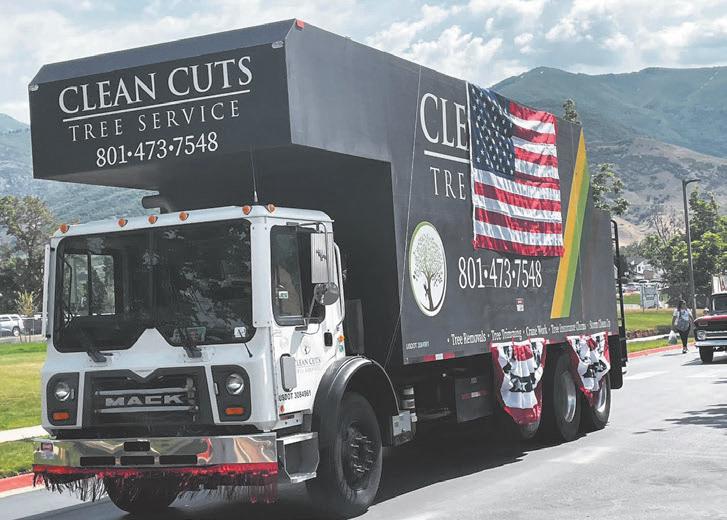

“That is what is most important, and it’s a constant reminder to remain faithful to him in a constantly changing world,” she said.
Nelson penned an article for the October issue of the Liahona, a church publication,
titled “A Pattern for Unity in Jesus Christ.”
In his commentary, Nelson explained the impact of remaining on the covenant path.
“When we make and keep covenants, we take the Lord’s name upon us as individuals,” he said. “In addition, we take His
name upon us as a people. All who make covenants and strive to keep them become the Lord’s people, His special treasure (see Exodus 19:5). Thus, we travel the covenant path both individually and collectively. Our covenant relationship with God gives us a common cause and a common identity. As we bind ourselves to the Lord, He helps us to have our ‘hearts knit together in unity and in love one towards another’ (Mosiah 18:21).”
Three young sisters shared their thoughts on the words “covenant path” and the impact the words have had on them.
“The covenant path is a way to follow Jesus,” 10-year-old Devyn Sturm said. “It helps me get closer to Christ and know what to do.”
12-year-old Reagan Sturm said the covenant path is “the path we follow to get to heaven” and that it’s helped her “come closer to Christ.”
Said 7-year-old Bentley Sturm: “I get baptized next year and that’s the first part of the path.”
Contact Standard-Examiner editor Ryan Comer at rcomer@standard.net.





























President Russell M. Nelson was set apart at the 17th president of The Church of Jesus Christ of Latter-day Saints on Jan. 14, 2018. Two days later, he spoke during a live broadcast from the annex of the Salt Lake Temple.
President Russell M. Nelson was set apart at the 17th president of The Church of Jesus Christ of Latter-day Saints on Jan. 14, 2018. Two days later, he spoke during a live broadcast from the annex of the Salt Lake Temple.
President Russell M. Nelson was set apart at the 17th president of The Church of Jesus Christ of Latter-day Saints on Jan. 14, 2018. Two days later, he spoke during a live broadcast from the annex of the Salt Lake Temple.
During these first remarks to the mem-
During these first remarks to the mem-
During these first remarks to the mem-
According to Elder D. Todd Christofferson of the Quorum of the Twelve Apostles, who addressed the topic of covenants during an address at the church’s April 2009 General Conference, a covenant is an “agreement between God and man, an accord whose terms are set by God. In these divine agreements, God binds Himself to sustain, sanctify and exalt us in return for our commitment to serve Him and keep his commandments.”
According to Elder D. Todd Christofferson of the Quorum of the Twelve Apostles, who addressed the topic of covenants during an address at the church’s April 2009 General Conference, a covenant is an “agreement between God and man, an accord whose terms are set by God. In these divine agreements, God binds Himself to sustain, sanctify and exalt us in return for our commitment to serve Him and keep his commandments.”
According to Elder D. Todd Christofferson of the Quorum of the Twelve Apostles, who addressed the topic of covenants during an address at the church’s April 2009 General Conference, a covenant is an “agreement between God and man, an accord whose terms are set by God. In these divine agreements, God binds Himself to sustain, sanctify and exalt us in return for our commitment to serve Him and keep his commandments.”
“We enter covenants by priesthood ordinances, sacred rituals that God has ordained for us to manifest our commitment,” Christofferson said.
“We enter covenants by priesthood ordinances, sacred rituals that God has ordained for us to manifest our commitment,” Christofferson said.
“We enter covenants by priesthood ordinances, sacred rituals that God has ordained for us to manifest our commitment,” Christofferson said.
The path is the journey through one’s lifetime along with constant learning of and living the Gospel of Jesus Christ. Along the way, a series of covenants are made with God. These covenants are made in a certain order, one building upon another.
The path is the journey through one’s lifetime along with constant learning of and living the Gospel of Jesus Christ. Along the way, a series of covenants are made with God. These covenants are made in a certain order, one building upon another.
The path is the journey through one’s lifetime along with constant learning of and living the Gospel of Jesus Christ. Along the way, a series of covenants are made with God. These covenants are made in a certain order, one building upon another.
“Covenants mark the path back to God,” said Elder Adeyinka A. Ojediran of the Seventy during the church’s April 2022 General Conference. “The ordinances of baptism and receiving the gift of the Holy Ghost, priesthood ordination and the sacrament lead us to the Lord’s temple to partake of His ordinances of exaltation.”
“Covenants mark the path back to God,” said Elder Adeyinka A. Ojediran of the Seventy during the church’s April 2022 General Conference. “The ordinances of baptism and receiving the gift of the Holy Ghost, priesthood ordination and the sacrament lead us to the Lord’s temple to partake of His ordinances of exaltation.”
“Covenants mark the path back to God,” said Elder Adeyinka A. Ojediran of the Seventy during the church’s April 2022 General Conference. “The ordinances of baptism and receiving the gift of the Holy Ghost, priesthood ordination and the sacrament lead us to the Lord’s temple to partake of His ordinances of exaltation.”
The covenant path includes the following: baptism, confirmation and receiving the gift of the Holy Ghost, partaking of the sacrament, priesthood ordination (for boys and men) and temple ordinances, including the endowment and the sealing of families together forever.
bership of the worldwide church as its new leader, Nelson offered this counsel to church members: “keep on the covenant path.”
bership of the worldwide church as its new leader, Nelson offered this counsel to church members: “keep on the covenant path.”
bership of the worldwide church as its new leader, Nelson offered this counsel to church members: “keep on the covenant path.”
“Your commitment to follow the Savior by making covenants with Him and then keeping those covenants will open the door
“Your commitment to follow the Savior by making covenants with Him and then keeping those covenants will open the door
“Your commitment to follow the Savior by making covenants with Him and then keeping those covenants will open the door
to every spiritual blessing and privilege available to men, women and children everywhere,” Nelson said.
to every spiritual blessing and privilege available to men, women and children everywhere,” Nelson said.
to every spiritual blessing and privilege available to men, women and children everywhere,” Nelson said.
What is the covenant path? As the title suggests, it is a journey, and covenants are made along the way.
What is the covenant path? As the title suggests, it is a journey, and covenants are made along the way.
What is the covenant path? As the title suggests, it is a journey, and covenants are made along the way.
There are two levels or orders of priesthood in the Church of Jesus Christ. The Aaronic Priesthood is conferred upon faithful male members of the church beginning at age 12. The greater of the two levels or orders
There are two levels or orders of priesthood in the Church of Jesus Christ. The Aaronic Priesthood is conferred upon faithful male members of the church beginning at age 12. The greater of the two levels or orders
There are two levels or orders of priesthood in the Church of Jesus Christ. The Aaronic Priesthood is conferred upon faithful male members of the church beginning at age 12. The greater of the two levels or orders
The covenant path includes the following: baptism, confirmation and receiving the gift of the Holy Ghost, partaking of the sacrament, priesthood ordination (for boys and men) and temple ordinances, including the endowment and the sealing of families together forever.
The covenant path includes the following: baptism, confirmation and receiving the gift of the Holy Ghost, partaking of the sacrament, priesthood ordination (for boys and men) and temple ordinances, including the endowment and the sealing of families together forever.




Baptism is the means by which people join the Church of Jesus Christ. Those who are baptized are cleansed of their previous sins and placed under covenant to live the principles of the gospel.
Baptism is the means by which people join the Church of Jesus Christ. Those who are baptized are cleansed of their previous sins and placed under covenant to live the principles of the gospel.
Baptism is the means by which people join the Church of Jesus Christ. Those who are baptized are cleansed of their previous sins and placed under covenant to live the principles of the gospel.
A person becomes and is confirmed a member of the church after baptism by a priesthood holder who puts his hands on the head of the person and blesses him or her to “receive the Holy Ghost.”
A person becomes and is confirmed a member of the church after baptism by a priesthood holder who puts his hands on the head of the person and blesses him or her to “receive the Holy Ghost.”
A person becomes and is confirmed a member of the church after baptism by a priesthood holder who puts his hands on the head of the person and blesses him or her to “receive the Holy Ghost.”




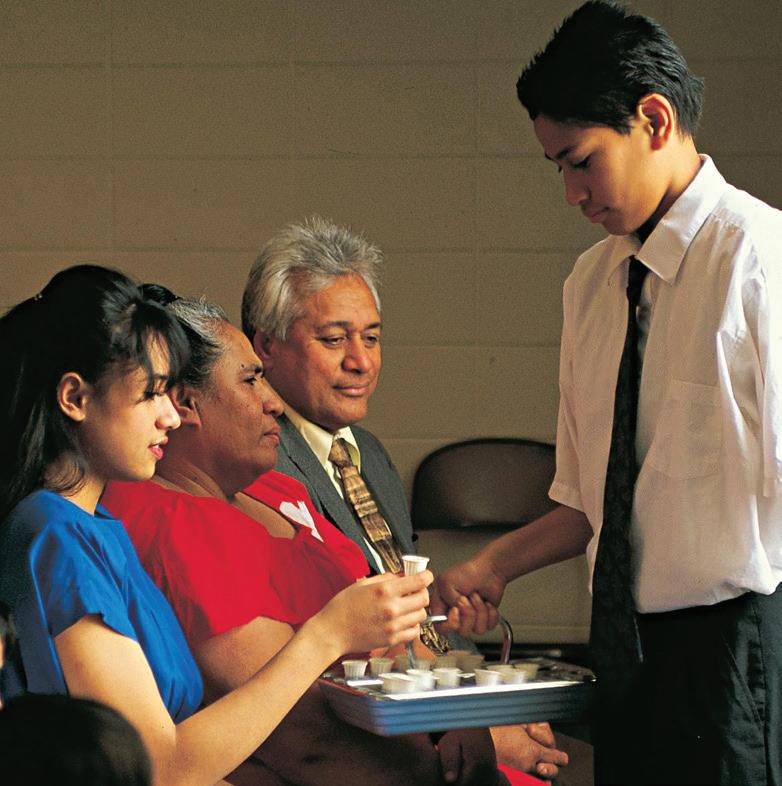



At the temple, church members participate in endowment and sealing ceremonies.
ORDINATION
of priesthood is the Melchizedek Priesthood, which is conferred upon faithful male church members beginning at age 18.
At the temple, church members participate in endowment and sealing ceremonies.
At the temple, church members participate in endowment and sealing ceremonies.
of is the Melchizedek Priesthood, conferred faithful male church members beginning at age 18.
of priesthood is the Melchizedek Priesthood, which is conferred upon faithful male church members beginning at age 18.






The word endowment means “a gift,” and during the endowment, church members receive greater knowledge of the Lord’s purposes and teachings, make certain covenants and are promised blessings now and forever. The endowment is available to church members who are at least 18 years old (and no longer attend high school, secondary school or the equivalent) and are faithful and prepared to do so.



The word endowment means “a gift,” and during endowment, church members receive greater knowledge of purposes and teachings, covenants and are promised blessings now and forever. The endowment available to church members are at least (and no longer attend high school, secondary school or the equivalent) and are
The word endowment means “a gift,” and during the endowment, church members receive greater knowledge of the Lord’s purposes and teachings, make certain covenants and are promised blessings now and forever. The endowment is available to church members who are at least 18 years old (and no longer attend high school, secondary school or the equivalent) and are faithful and prepared to do so.



The word sealing refers to the joining of a man and a woman and their children for eternity. When a man and a woman are married in a temple, the ceremony is referred to as a sealing. Children born to this couple are considered automatically sealed to their parents. Couples who joined the church after their marriage or did not marry in the temple originally for other reasons still have the opportunity to be sealed together in the temple later. Parents can have their children sealed to them at that time.
The word sealing refers to the joining of a man and a woman and their children for eternity. When a man and a woman are married in a temple, the ceremony is referred to as a sealing. Children born to this couple are considered automatically sealed to their parents. Couples who joined the church after their marriage or did not marry in the temple originally for other reasons still have the opportunity to be sealed together in the temple later. Parents can have their children sealed to them at that time.
The word sealing refers to the joining of a man and a woman and their children for eternity. When a man and a woman are married
a sealing. Children born to this couple are considered automatically parents. Couples who joined the church their not temple originally for other reasons still have opportunity to sealed temple later. Parents can have their children sealed to them at that time.
The sacrament is the formal blessing and administering of bread and water representing the body and blood of Christ to church members, usually during a Sunday worship meeting.
The sacrament is the formal blessing and administering of bread and water representing the body and blood of Christ to church members, usually during a Sunday worship meeting.
The sacrament is the formal administering of bread and water representing body blood of Christ to church members, during a Sunday worship meeting.
Photo courtesy of Intellectual Reserve, Inc.





BY LAURA GILES Special to the Daily Herald
Covenants are agreements between two parties. To many spiritual people, including members of The Church of Jesus Christ of Latter-day Saints, a covenant is a sacred agreement between God and His children.
“A covenant is a binding spiritual contract, a solemn promise to God our Father that we will live and think and act in a certain way — the way of his Son, the Lord Jesus Christ. In return, the Father, Son and Holy Ghost promise us the full splendor of eternal life,” said Elder Jeffrey R. Holland, member of the church’s Quorum of the Twelve Apostles, in a January 2012 talk from a missionary satellite broadcast.
There are many references to sacred covenants in ancient scripture. In Genesis of the Old Testament, Chapter 17, Verse 7, it reads, “And I will establish my covenant between me and thee and thy seed after thee in their generations for an everlasting covenant to be a God unto thee, and to thy seed after thee.” In Exodus, Chapter 19, Verse 5, it reads, “Now therefore, if ye will obey my voice indeed, and keep my covenant, then ye shall be a peculiar treasure unto me above all people: for all the earth is mine.”
Anette J. Dennis, Relief Society General Presidency first counselor, said during the April 2024 general conference, “We have the privilege and blessing of being invited into a covenant relationship with God, in which our own lives can become a symbol of that covenant. Covenants create the kind of relationship that allows God to mold and change us over time and lift us to become more like the savior, drawing us closer and closer to him and our Father and eventually preparing us to enter their presence.”
Dennis said that the covenant path — making and keeping covenants throughout life’s journey — is all about a relationship with God. “Our Father wants a deeper relationship with all his sons and daughters, but it is our choice. As we choose to draw nearer to him through a covenant relationship, it allows him to draw nearer to us and more fully bless us,” she said.
One of those covenants is baptism. During the October 2000 general conference, Elder Robert D. Hales of the Quorum of the Twelve Apostles, said, “At baptism we make a covenant with our Heavenly Father that we are willing to come into his kingdom and keep his commandments from that time forward, even though we still live in the world.” Hales said Jesus was baptized to fulfill his Father’s commandment that sons and daughters of God should be baptized. According to lds.org, “Those who are baptized enter into a covenant with God to take upon themselves the name of Jesus Christ, keep His commandments and serve Him to the end. Those who keep the covenant they made at baptism are blessed by the Lord for their faithfulness.”
Each Sunday, members of The Church of Jesus Christ of Latter-day Saints have the opportunity to renew the covenants that they made when baptized through the taking of the sacrament. “At baptism and when we partake of the sacrament, we witness that we are willing to take on ourselves
the name of Jesus Christ,” said Elder Dale G. Renlund, member of the Quorum of the Twelve Apostles, at the April 2023 general conference. “Our covenants give us power to stay on the covenant path because our relationship with Jesus Christ and our Heavenly Father is changed. We are connected to them by a covenantal bond.”
Renlund also spoke about covenants that are made in the temples of the church, which are sacred places of worship. “By making and keeping temple covenants, we learn more about the Lord’s purposes and receive a fulness of the Holy Ghost. We receive direction for our lives. We mature in our discipleship so that we do not remain perpetual, unknowing children. Rather, we live with an eternal perspective and are more motivated to serve God and others. We receive increased capacity to fulfill our purposes in mortality. We are protected from evil, and we gain greater power to resist temptation and to repent when we stumble. When we falter, the memory of our covenants with God helps us return to the path,” he said.
During the October 2008 general conference, then-Relief Society General Presi-
















dency First Counselor Silvia H. Allred spoke about the importance of the covenants made in the temple. “Temple covenants and ordinances are a powerful symbol of Christ and his atonement. We all receive the same instruction, but our understanding of the meaning of the ordinances and covenants will increase as we return to the temple often with the attitude of learning and contemplating the eternal truths taught,” she said.
In October 2013, then-Relief Society General President Linda K. Burton listed some reasons for keeping covenants. First, she said, “covenant keeping strengthens, empowers and protects. As we keep our covenants, we also receive courage and strength to help us bear one another’s burdens.”
and are therefore part of the fulness of his gospel. For example, God promised to send a savior for his children, asking in turn for their obedience to his law.”
“The reward for keeping covenants with God is heavenly power — power that strengthens us to withstand our trials, temptations and heartaches better,” Nelson said. “This power eases our way. Those who live the higher laws of Jesus Christ have access to his higher power. Thus, covenant keepers are entitled to a special kind of rest that comes to them through their covenantal relationship with God.”
— Russell M. Nelson, church president of The Church of Jesus Christ of Latter-day Saints
The second reason she gave for keeping covenants is to experience true happiness. Third, keeping covenants demonstrates love for the savior and Father in heaven.
President of the church Russell M. Nelson has spoken often throughout the years about the importance of covenants. In an October 2011 talk, he spoke about how God has made covenants with his children through the ages. “His covenants occur throughout the entire plan of salvation
In an October 2022 talk titled, “Overcome the World and Find Rest,” he spoke about how making and keeping covenants actually makes life easier. “Each person who makes covenants in baptismal fonts and in temples — and keeps them — has increased access to the power of Jesus Christ. Please ponder that stunning truth!” Members of The Church of Jesus Christ of Latter-day Saints strive to keep covenants as a way of staying close to Heavenly Father and Jesus Christ, receiving guidance throughout their lives, working to serve and love others and, in time, returning to live with Heavenly Father.
“The reward for keeping covenants with God is heavenly power — power that strengthens us to withstand our trials, temptations and heartaches better,” Nelson said. “This power eases our way. Those who live the higher laws of Jesus Christ have access to his higher power. Thus, covenant keepers are entitled to a special kind of rest that comes to them through their covenantal relationship with God.”

BY ROB NIELSEN Standard-Examiner
As October’s general conference approaches, many are taking stock of how the The Church of Jesus Christ of Latter-day Saints has evolved in recent years. One of those evolutions has been a growing emphasis on the words “covenant path.”
Brigham Young University professor Kerry Muhlestein explained the covenant path isn’t necessarily something new.
“God most fully connects with us, his children, through his son, and through covenant,” Muhlestein said. “He wants to heighten his relationship with all of us through this priesthood power-enabled bond. There is an overarching covenant
which we often call the New and Everlasting Covenant or the Abrahamic Covenant. We enter into that at baptism, but there are other covenants we make in temples that are parts of that larger covenant.
“The covenant path consists of making and keeping the covenants the Lord has asked us to make, and then being worthy of continually renewing that covenant.
We make covenants at baptism and in the temple. We renew those covenants weekly as we partake of the sacrament. You are on the covenant path if you are keeping covenants you have made and are working towards making the next covenant available to you, or are worthy of renewing the

19
covenants you have already made.”
Muhlestein said covenants have always been a part of Latter-day Saint theology.
“The notion of covenant has been part of LDS teachings since Joseph Smith,” he said. “God spoke to Joseph in the Sacred Grove about covenants. Thus, from the beginning of the restoration of the gospel, the idea of covenant has been an important part of our revealed beliefs.”
path becomes integral to guiding Latterday Saints, the church has also embraced technology.

Muhlestein
He acknowledged that this teaching has grown in emphasis over the last few years.
“Although a covenant emphasis has always been part of our teachings, we have been blessed by a renewed and greater emphasis under the prophetic leadership of Russell M. Nelson,” he said. “References to the covenant path have exponentially increased since he became the prophet, and the introduction of the program called ‘the covenant path’ took place under his inspired leadership.”
As the times change and the covenant
“Recently The Church of Jesus Christ of Latter-day Saints started a program, that has an app associated with it, which is designed to help people who are in the process of moving from baptism to making temple covenants,” Muhlestein said. “The program is useful and wonderful, but its point is to help us really make and keep covenants. As useful as the app and program are, they should not be confused with the actual covenants. It is a blessing to have something that helps us focus on making and keeping covenants.”
He said that there have traditionally been similar programs within the church.
“The church has long had programs designed to help people progress in their conversion and making of covenants through ordinances,” he said. “This new program has a more specific covenant path emphasis than programs of the past.”
General conference is set for Oct. 5-6.
For more information on My Covenant Path, visit https://tinyurl.com/4zs8b8x9.






BY RYAN ASTON Standard-Examiner
For members of The Church of Jesus Christ of Latter-day Saints, progressing in one’s spiritual journey is a daily consideration. References to keeping on the “straight and narrow path” or “clinging to the iron rod,” as described in Lehi’s vision of the Tree of Life in the Book of Mormon (1 Nephi 8), are oft recited.
More recently, the concept of the “covenant path” has risen to prominence. The covenant path isn’t just an idea or a philosophy on how to be, though. There are actual steps that members must take and benchmarks to be reached in order to obtain the ultimate desire Latter-day Saints believe the covenant path leads to — exaltation, which is defined as “eternal life, the kind of life God lives” according to the church’s “Gospel Principles” book.
In an effort to aid new and returning members in their own traversals of the covenant path, the church in 2021 released an experiential guide known as “My Covenant Path,” which is accessible via the church’s Gospel Library app and website (under “Handbooks and Callings,” then “Ward or Branch Callings” and, finally, “Strengthening New Members”).
“My Covenant Path” essentially serves as a checklist of experiences one can have within two years of their baptism and confirmation. Many of the items on that list refer to covenants — sacred agreements or promises between members and God — in the literal sense; important steps on the conceptual covenant path. However, things like making
An attempt to help new and returning Latter-day Saints
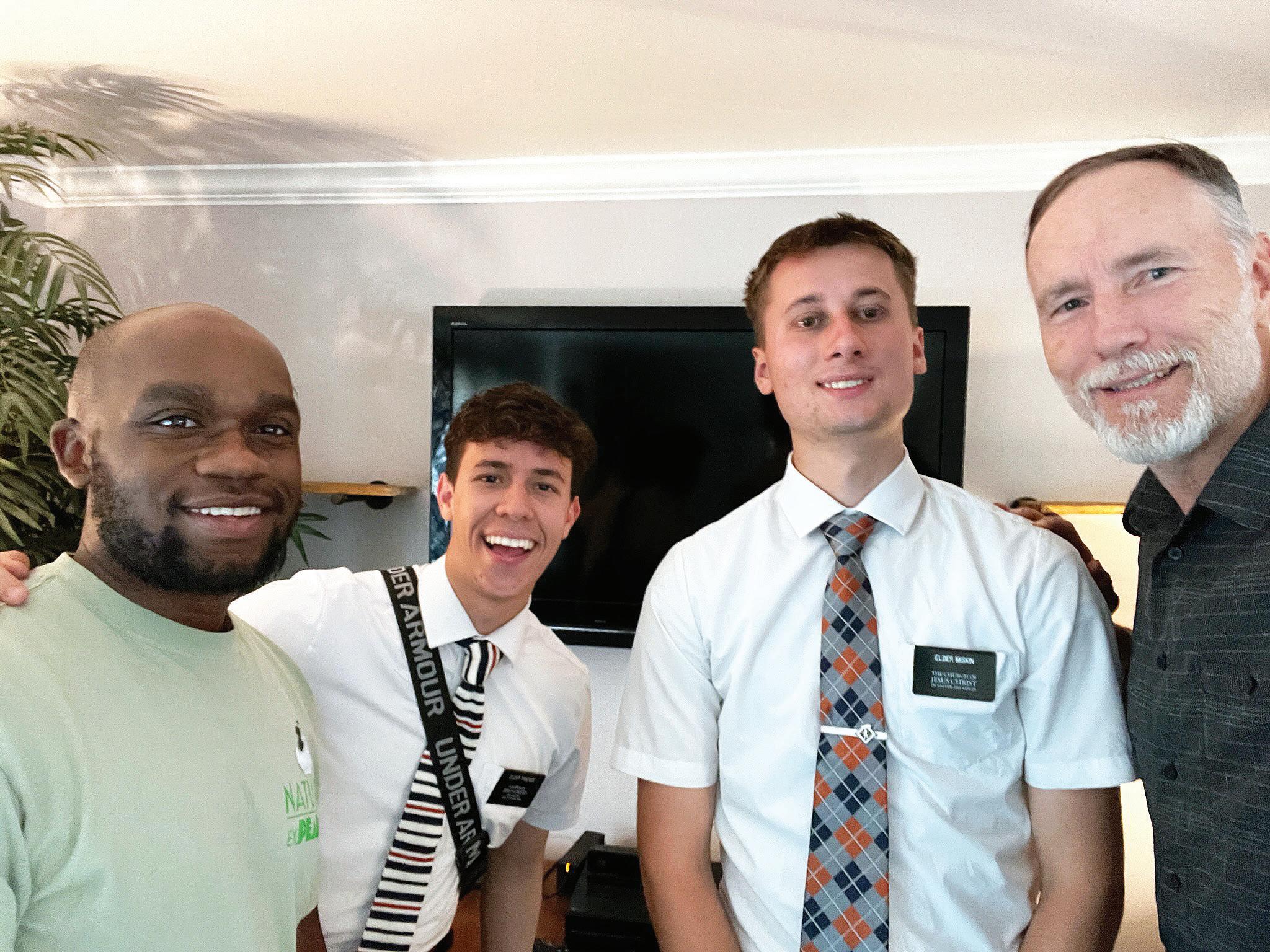
friends with fellow ward members, participating in Home Evening, learning about church programs and overcoming discouragement and setbacks also are included.
The guide stresses that many of the items listed can be experienced “within one year” of baptism and confirmation. Such has been the case for Cameron Johnson who, after growing up in the southeastern United
States and attending other churches, found his way to the Ogden area recently via the U.S. Air Force.
“I get orders to come to Utah, and all my co-workers, you know, they’re just kind of talking about it,” Johnson recalled.
“They’re like, ‘Oh, watch out for the Mormons. They’re out there,’ and I’m like, ‘Who’s that?
I don’t even know who that is.’”
Johnson attended his first
ward meeting in June and has progressed rapidly since then. He was baptized and confirmed Aug. 4, received the priesthood shortly thereafter and now holds a calling in his ward’s Young Men’s program.
“It’s so comforting,” Johnson said of his experience so far. “It’s like the Father’s hand on your shoulder, or your partner just being with you, or just knowing that you’re loved and
you’re cared for and you’re safe. It’s really awesome.”
Covenant Path Progress reports are used alongside the “My Covenant Path” guide by local leaders via the church’s Member Tools app and the “Leader and Clerk Resources” website to monitor these milestones and to aid and assist in the progression of new and returning members.
Most of the information contained in those reports is also accessible to missionaries, like those who taught Johnson, via the Preach My Gospel app. Members concerned about issues of privacy can opt out of Covenant Path Progress monitoring at any time.
In the September 2021 Africa South Local Pages of the church’s Liahona magazine, the “My Covenant Path” initiative is described as having been created “to help those who have recently joined or returned to the Church to feel that sense of belonging.”
Tracy Watson, a manager in the church’s Priesthood and Family Department, participated in the rollout of “My Covenant Path.” He said that helping new members connect and build stronger relationships with other members was one of the primary goals of the program’s development.
“Belonging is a very important part. I think I would broaden that just a little bit to say that one of the key reasons for this was to increase the love that these people were feeling from other members of the church,” Watson said. “When we did the training on this, we told the leaders, ‘Look, if you never use the tool but you did everything you could to love these people, to connect with them and to help them feel in the cause of Christ, then it’s a success.’”
Finding that sense of belonging and also avoiding discouragement are crucial to maintaining the proper trajectory on one’s spiritual journey, according to D. Todd Christofferson of the Quorum of the Twelve Apostles.
Christofferson linked the two concepts during an October 2022 general conference talk covering what he referred to as “the doctrine of belonging.”
“A sense of belonging is important to our physical, mental and spiritual well-being. Yet it is quite possible that at times each of us might feel that we don’t fit in,” he said. “In discouraging moments, we may feel that we will never measure up to the Lord’s high standards or the expectations of others. We may unwittingly impose expectations on others — or even ourselves — that are not the Lord’s expectations.”
More tenured members are advised in “My Covenant Path” to assist new and returning members in completing actions covered in the guide, which also aims to “create a better transparency on what the experience is like as someone steps onto the covenant path and starts walking down that path,” according to Watson.
For his part, Johnson looks to have found his sense of belonging, despite the vast difference between his experience with other churches and those he has had since joining The Church of Jesus Christ of Latter-day Saints.
“After the first meeting, I had people come to me immediately — hands out, smiles, asking all about me. Very welcoming,” he said. “Even on the day of my baptism, I had a room full of people I didn’t know. The only people I knew were (his girlfriend) Isabel and her family — her mom, her dad, her nieces — (a brother in the ward) and the elders, but beyond them, no one. And it was, like, packed. It felt really good.”























